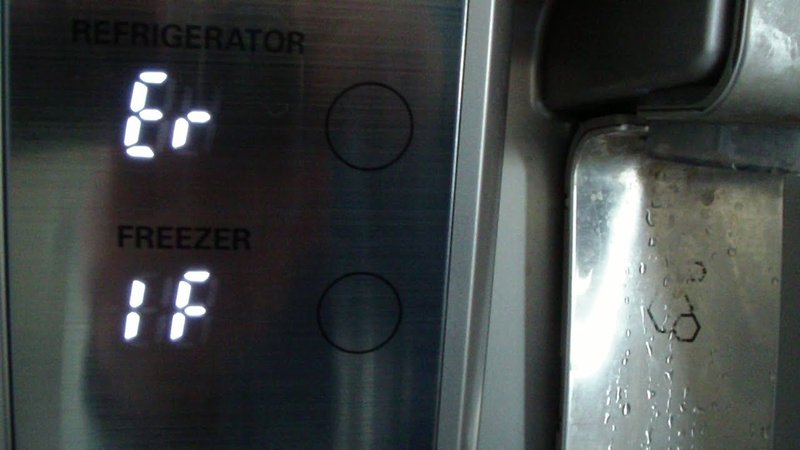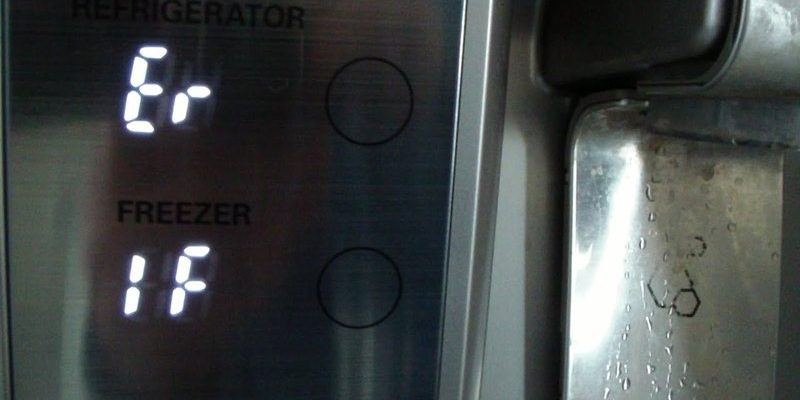
Error codes in appliances are a bit like traffic signs; they guide you on what might be going wrong. Just as a red light gets your attention, an error code like E1 is your refrigerator’s way of signaling for help. It’s essentially saying, “Hey, I need a little TLC!” This code typically relates to the refrigerator’s sensor system, specifically the thermistor, which is responsible for monitoring the temperature and ensuring everything stays at the right chill factor. When this sensor malfunctions, it can cause your fridge to misbehave, such as by not cooling properly or running too cold.
Trying to troubleshoot these issues on your own can sometimes feel like deciphering ancient hieroglyphics, especially if you’re new to handling appliance hiccups. However, there are times when a little DIY investigation just won’t cut it, and calling a technician becomes necessary to ensure everything is sorted out properly and safely.
Understanding LG Refrigerator Error Code E1
Getting to grips with error code E1 is your first step in resolving the issue. This error is directly linked to your refrigerator’s temperature sensor system. Think of the sensor, or thermistor, as the brain behind your fridge’s cooling mechanism. It’s what tells your fridge when to chill out more or less. If it senses a problem, the E1 code pops up as an alert.
If you notice your fridge displaying this error, the first thing you might want to do is a simple reset. Unplug the refrigerator for about ten minutes, then plug it back in. Just like rebooting a sluggish computer, this can sometimes resolve minor glitches. However, if the error persists, it could indicate a genuine problem with the thermistor or associated wiring.
Now, given how crucial this sensor is, tampering with it without proper knowledge can be like trying to fix a car engine without a manual. Remember, your fridge is a complex machine, much like your smartphone but focused on different technology. So, understanding your limitations here is crucial. It’s at this juncture that calling a professional becomes a wise choice.
Why It’s Important to Call a Technician
So why involve a technician? Well, for starters, these professionals have the tools and expertise to pinpoint why the E1 code is appearing. It’s like enrolling in a cooking class rather than trying to learn from a confusing recipe book. They know what to look for and how to fix it efficiently. Professionals can run diagnostics to check if the sensor is genuinely faulty or if there’s a deeper issue at play.
Attempting to repair or replace the thermistor without the right know-how might worsen the problem. In some cases, it could mean other components get inadvertently damaged, leading to even costlier repairs. Moreover, tampering with electrical components without experience could pose safety risks like electric shocks, which nobody wants!
A technician will also ensure that any replacement parts are top quality, saving you the frustration of repeated breakdowns. By leaving it to the experts, you maintain the warranty and integrity of your appliance, avoiding potential voids that DIY repairs might cause. It’s like ensuring your car gets the best service possible to keep running smoothly.
Tips for Maintaining Your LG Refrigerator
While error codes are sometimes unavoidable, regular maintenance can significantly reduce their occurrence. Simple practices can extend the life of your refrigerator and keep those pesky E1 codes at bay. Imagine maintaining a garden; regular watering and weeding prevent big problems later.
Start by ensuring the refrigerator’s vents and coils are clean. Dust and debris buildup can cause your fridge to overheat and malfunction. It’s akin to keeping your air conditioning filters clean for efficient operation. Just a quick vacuum and dust every couple of months can make a world of difference.
Also, pay attention to the door seals. If they’re not tight, your fridge works harder to maintain its cool, leading to potential overuse and errors. Regularly inspect your seals for wear and tear, and clean them with a mild detergent. It’s like ensuring your tires are properly inflated for safe and efficient driving.
Finally, avoid overloading your fridge. It needs space to circulate air efficiently. Overloading can strain the cooling system, leading to wear and tear. Think of it like overpacking a suitcase; it just makes the journey more cumbersome and stressful for your appliances.
Preventative Strategies to Avoid Future Errors
Let’s talk about some proactive measures. Just like you service your car to prevent breakdowns, servicing your refrigerator can prevent future error codes. Schedule regular maintenance checks with a trusted technician. They can spot issues early before they morph into serious problems.
Keep an eye on your refrigerator’s performance. If you notice any irregularities, like inconsistent temperatures or strange noises, these could be early warning signs of trouble. Address them promptly rather than waiting for an error code to appear.
Finally, embrace technology! Many newer LG models connect to smartphone apps for real-time monitoring. This can be your second set of eyes, alerting you to problems before they escalate. It’s like having a security system for your kitchen.
In conclusion, your refrigerator is an essential part of your home, and understanding when to call in a professional for error code E1 can save you time, money, and stress. With these strategies, not only do you learn when to seek help, but you also empower yourself to maintain your appliance in top condition.
